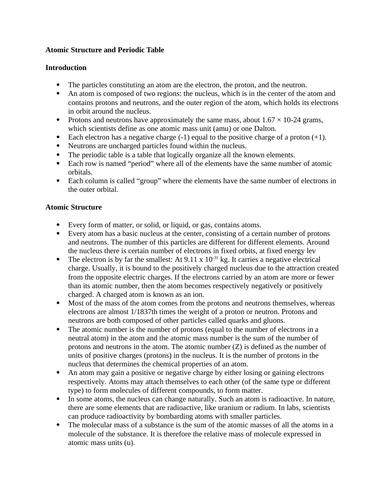
Introduction
• The particles constituting an atom are the electron, the proton, and the neutron.
• An atom is composed of two regions: the nucleus, which is in the center of the atom and contains protons and neutrons, and the outer region of the atom, which holds its electrons in orbit around the nucleus.
• Protons and neutrons have approximately the same mass, about 1.67 × 10-24 grams, which scientists define as one atomic mass unit (amu) or one Dalton.
• Each electron has a negative charge (-1) equal to the positive charge of a proton (+1).
• Neutrons are uncharged particles found within the nucleus.
• The periodic table is a table that logically organize all the known elements.
• Each row is named “period” where all of the elements have the same number of atomic orbitals.
• Each column
Something went wrong, please try again later.
This resource hasn't been reviewed yet
To ensure quality for our reviews, only customers who have purchased this resource can review it
Report this resourceto let us know if it violates our terms and conditions.
Our customer service team will review your report and will be in touch.
